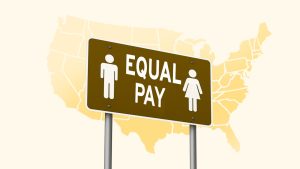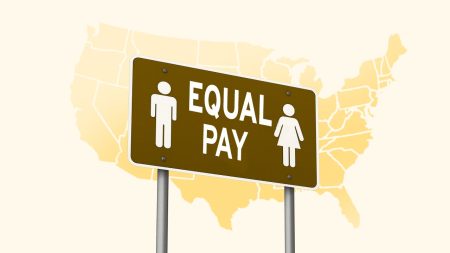Photography by Getty Images; Illustration by Bankrate
Key takeaways
- Net price is the cost of attending college for one year after you’ve subtracted grants and scholarships.
- Use a net price calculator to determine the price you would pay for each school you’re considering attending.
- Your financial aid letter will help you accurately calculate your net price for the school year.
Colleges publish their total cost of attendance – which includes tuition, books and housing – to help prospective students prepare for the upcoming year. However, the amount you actually wind up paying for could be less if you’re eligible for grants and scholarships. This reduced out-of-pocket expense is known as the net price.
When making your college decision, you should focus on the net price rather than the published cost of attendance. Here’s what you should know about the net price of college, including how to calculate yours.
Sticker price vs. net price: What’s the difference?
You’ll usually see the sticker price or the cost of attending the school on a prospective school’s financial aid website. It includes all the expenses like tuition, housing and books that you’ll have to pay for a single academic year.
It’s different from the net price, which subtracts your scholarships, grants and other financial aid to arrive at the amount you’ll pay out of pocket. While the sticker price is the same for all students of a particular profile, like four-year in-state undergrad students, the net price will vary based on each student’s unique financial aid package.
Calculating net price
The net price is computed using this formula:
Total cost of attendance – grants and scholarships + transferable credits counted towards a degree program
Once you know the net price, you can decide how you’ll pay for it. For instance, you might use savings, take out student loans or get a summer job.
To calculate your net price at a particular school, head to the school’s financial aid website or use the U.S. Department of Education’s search tool to find the school’s net price calculator. These calculators can help you get a personalized estimate so you can easily compare costs at multiple colleges.
Gathering your documents and entering the information takes about 20 minutes. Here’s what you can expect:
- Gather your documents: You’ll get through the process quicker — and get more accurate results — if you have everything on hand before you start. The school should let you know what you need, such as your parents’ most recent tax return, W-2 form and bank statement.
- Enter the information: The school will ask for your personal information, such as name, address and birthdate, along with details about your intended major and start date. It may also ask about your academic record from high school, such as GPA, class rank, ACT scores and SAT scores, if available.
- Read the report: Based on the details you provide, the school estimates scholarships, federal student loans and grants you might be eligible for. It’ll subtract that amount from the school’s cost of attendance to arrive at your net price.
- Save the information: Download the report and save it for your records, and use the information to compare prices and financial aid across multiple schools. If the schools you’re comparing use the College Board’s Net Price Calculator, you can create an account and save your information there.
Limitations of net price calculators
Although colleges are required to provide a net price calculator for prospective students, they may not provide a completely accurate price tag. Be aware of these limitations:
- Typically geared toward first-year undergraduates: These calculators usually estimate what a first-year undergraduate student might pay for their first year. Continuing, graduate, transfer, international and part-time students may need to contact the school’s financial aid office for a customized estimate.
- Ignores talent-based aid: The net price calculator may not account for certain financial aid, such as an athletic or arts-based scholarship.
- No standardization: Every school uses different information and formulas to calculate net price, and some use outdated cost of attendance figures.
- Aid isn’t guaranteed: The calculator estimates your aid but doesn’t guarantee it. You’ll still need to apply to the school, fill out the FAFSA and receive your award letter to find out the exact amounts.
How much should you expect to pay for college?
Your expected tuition and fees will depend on your school – whether it’s in-state or out-of-state, public or private, two-year or four-year. The average price of tuition and fees for full-time undergraduates are the following:
| Type of school | Average sticker price for tuition and fees (2024-2025) | Average net price for tuition and fees (2024-2025) |
|---|---|---|
| Private nonprofit four-year college | $43,350 | $16,150 |
| Public four-year college (out-of-state residents) | $29,840 | Not available |
| Public four-year college (in-state residents) | $11,610 | $2,480 |
| Source: College Board |
Of course, tuition and fees aren’t the only expenses you’ll need to think about. Room and board, books and supplies, transportation and other expenses will increase your cost of attendance. Factor in these costs when researching schools. Your financial aid letter should spell out whether you’ll get a break on certain costs.
How to pay for college if the net price is too high
If you can’t afford the net costs of going to college, you’re not completely out of luck. Here are some viable alternatives to consider.
Bankrate insight
Bottom line
Higher education can be expensive, depending on the school you attend and whether you’re an in-state resident. But thanks to financial aid, many students pay less than their college’s sticker price. When you’re comparing the cost of schools, use the sticker price only as a starting point.
You can use a net price calculator to estimate your potential net price and then check your financial aid award letter for final details. From there, you can determine if you need to explore other options to finance school, which may include federal or private student loans or a part-time job.
Read the full article here









